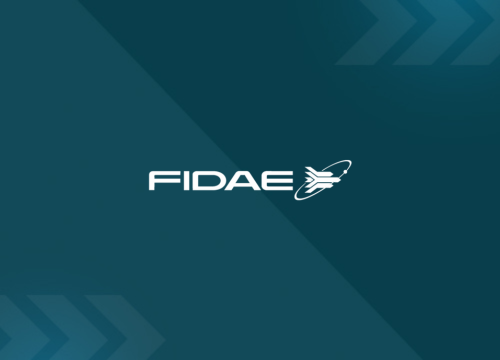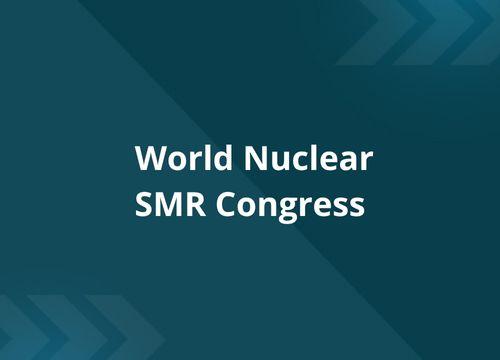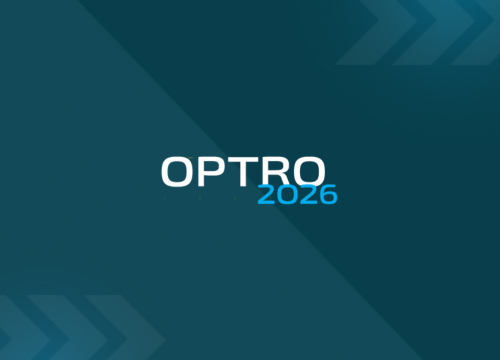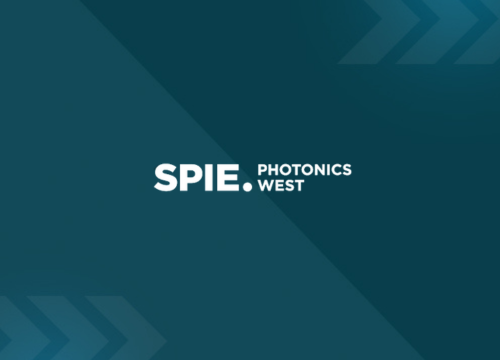Processes that require heating need safety controls because of the risk of fire
Thermal processes are used in a lot of industries for material engineering such as melting, forming or drying. As processing temperatures can be high, it is of importance to monitor cooling after the heating process so that the next steps in the process or storage can occur safely. Indeed, a temperature too high can be troubling for following procedural steps. Moreover, it is a problem for storage as it may induce fire which would stop production, damage products and even cause damage to the factory.
LWIR, a good wavelength range to monitor temperature
Long-wave infrared (LWIR) cameras operate in the 8µm to 14µm wavelengths. This is the proper spectral band to measure heat emitted by objects up to 400°C (see Fig 1.) with no need for lighting and no influence from natural light.
LWIR cameras for this application are based on microbolometer arrays. Each pixel acts as a micro-thermometer. The result is a sensor that builds thermal maps of the observed area with high spatial resolution.
Fig 1. Temperature monitoring: the thermal camera (left picture) detects an abnormal temperature close to 200°C at a pipe junction. This defect cannot be seen on a visible camera (right picture).
When properly calibrated they can even read absolute temperature, enabling thermography. Thanks to this characteristic, LWIR cameras are a good solution for real time temperature monitoring.
Gobi+ camera
Xenics has a lot of experience in building uncooled thermal cameras for thermography. The Gobi+ (see Fig 2.) is based on a 17µm pitch two dimensional microbolometer array with VGA resolution (640 columns of pixels by 480 lines). This highly sensitive camera can detect differences in temperature as low as 0,05°C and can output data at 60 frames per second. With optical interfaces offered in either M34 or M42, it can be mounted with lenses from a 5,8mm to 200mm focal length depending on the application. Moreover, it exists with CameraLink™ and GigE Vision® output and control interfaces, and is GenICam™ compliant, making it simple and straightforward to integrate into industrial systems.
Finally, the key feature of the Gobi+ for thermography is its calibration. The camera can be calibrated in temperature. The use of such a calibration pack makes it a very accurate system for absolute temperature measurement.
Fig 2. Gobi+ camera (https://www.xenics.com/long-wave-infrared-imagers/gobi-640-series/).
A real case: Boulder Imaging
Boulder Imaging, a company developing and offering machine vision systems needed to design a solution to prevent fire in one of their customers’ facilities. Indeed, this one uses a heating process for removing water from their products and it happens that when exiting from the oven, products can catch fire. (https://www.photonics.com/Articles/Spotting_Fires_and_Saving_Production/a65776)
Boulder Imaging decided to go for a thermal camera-based detection system. With this system, there is no need for implementing and controlling additional lighting sources. The thermal imaging-based system detects abnormally high temperature areas which is a sign of a fire risk. This is illustrated on the left side of figure 3 which shows a hot spot that will trigger an alert at the customer system level for safety reasons, the right picture being a normal temperature variation.
Moreover, the thermal imaging system gives an indication to the temperature of products exiting the oven and thus can be used for process optimization. This is illustrated in the right side of figure 3 which shows that the product is running cooler than the one on the left, so the customer may choose to increase the heat output on the right side of the oven for a more uniform drying of the product.
Fig 3. Pictures from Boulder Imaging inspection system (Courtesy of Boulder Imaging).
Reason for the choice
When choosing the thermal camera, Boulder Imaging decided for a Xenics one: the Gobi+. Joey Nesbitt, Director of Hardware Engineering in Boulder Imaging explains: “We have been very pleased with the Xenics LWIR camera used in this application! We evaluated other LWIR cameras on the market and the Xenics Gobi+ 640 was the best option for us. One of the main reasons was that it is a true thermographic sensor, with available calibrations, to determine absolute temperatures”. Indeed, for a relevant alarm and process monitoring system, thermal imaging with hot spot detection is not sufficient as it is also necessary to get the absolute temperature cartography of the items. This means a good calibration of the camera with its optics. As previously explained, this is one of the key features of the Xenics Gobi+ camera: an accurate temperature calibration pack. This enables the user, not only to detect hot spots, but also to measure absolute temperatures and thus take relevant actions to prevent fire and optimize processes.
Conclusion
Thanks to its real thermography capability, Xenics Gobi+ camera has demonstrated to be a good solution for temperature monitoring. In addition to allowing temperature inspection and fire prevention in an industrial environment, it has demonstrated to be helpful in process monitoring.









